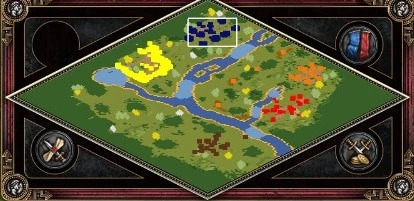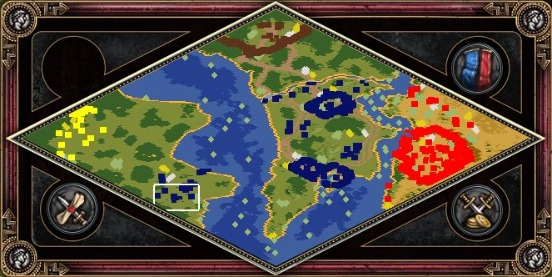Yes, let’s say that the crisis of the 3rd century is what separates AoE 1 and AoE 2 but since AoE 1’s Imperium Romanum campaign goes all the way to 373 CE (The Coming of the Huns) shortly before the battle of Adrianople (I hope they put it as a historical battle in AoE 1 ) as I consider that the exclusive chronology of AoE 1 ends there, since the Romans of AoE 2 start their chronology in the game in 395 CE…

Description
Pannonia, 373 CE
A new and more fearsome group of barbarians, the Huns, have been moving west from Central Asia for the past several decades. They are skilled horsemen and are rumored to be nigh invincible! Germanic and Alanic tribes alike flee before them, flooding towards the frontiers of the Empire. The upcoming invasion will be the ultimate test of the strength of the Empire. If you cannot parry their incursions, Rome will be sacked, and the empire overrun!
Historical notes
By the mid-4th century CE, the Roman Empire had recovered at least partially from the disastrous Third Century Crisis, and its military had seen several necessary reforms that rendered it more able to resist enemy incursions. The vastness of the frontiers remained a problem, however, and it was becoming increasingly difficult to contend with both the Germanic threats to the north and the Sassanid Persian threat to the east. Social concerns, succession crises, and the ensuing civil wars only further complicated things.
The incursion of the Huns into Europe tipped the balance of power against the Roman defense system. The Huns were one of the first groups of Turkic nomads to migrate into the region, and were extremely skilled horsemen and horse archers. In 373 CE, they defeated the Alans at the Tanais river, subduing them and driving westward. Three years later, they had inflicted a widespread slaughter on the Gothic tribes living north of the Black Sea, forcing them to flee west and seek asylum within the Roman Empire.
Faced with the incredible opportunity to peacefully incorporate the militarily-adept Goths as a subject people, Emperor Valens (or, perhaps, his officials) committed a series of grave errors. Hostilities broke out, culminating in the Battle (disaster) of Adrianople in 378 CE, where the Goths wiped out most of the military strength of the eastern half of the Empire. The Romans watched helplessly as they pillaged Greece and the Balkans before moving west towards Rome, which they would sack in 410 CE. (This is seen in Alaric’s campaign in AoE 2 DE)
The Huns tended to attack in generational waves. Around 405 CE, they launched another invasion, forcing groups such as the Vandals, Goths, Suebi, and Alans into the Western Empire, while simultaneously pillaging Thrace. The above incursions would cost Rome some of its most valuable provinces. The Hunnic threat intensified under the rule of Attila (r. 434-453), who commanded an immense confederation of Germanic, Turkic, and Alanic groups. Attila first mercilessly attacked the Eastern Empire, forcing them to abort a military endeavor to recapture North Africa from the Vandals, before swinging west into Gaul in 451 CE. (This is seen in Attila’s campaign in AoE 2 DE)
His campaign pitted the deadly Hunnic confederation against the forces of Flavius Aetius, a Roman commander who had grown up among the Huns and had managed to negotiate a loose alliance with several other “barbarian” tribes. They clashed at the Catalaunian Fields, a bloodbath that proved largely inconclusive. The Huns lost the battle from a strategic standpoint, but returned the following year to pillage Northern Italy. The Roman alliance fragmented, and Aetius, the last great Roman general, would be slain in cold blood by Emperor Valentinian III, who was jealous of his success. (Friends of Aetius would later murder Valentinian in an act of retribution.)
Approaching the gates of Rome, Attila was met by Pope Leo I, who persuaded him to turn away from the city (perhaps in the context of the famine and plague that was rampant in the region at the time). Attila returned home in glory, but died in a drunken stupor after the feast in honor of his wedding to the Germanic princess 1ld1c0 perhaps from a nasal hemorrhage that choked him with his own blood (Actually it would be a chicken bone that got stuck in his larynx and that caused the nasal hemorrhage). The Hunnic confederation would not long survive his death, but the Hunnic and Germanic invasions had done their damage. The military strength of the Western Roman Empire, which boasted a standing army of 200,000 nearly five decades earlier, had been nearly entirely erased, and the Western Empire collapsed in 476 CE.


